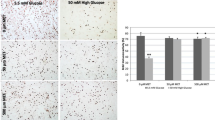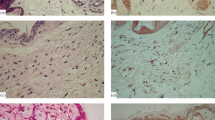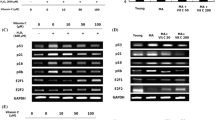Abstract
Metformin is the most widely used anti-diabetic drug in the world. It reduces advanced glycation end product (AGEs)-induced ROS generation in high glucose condition. Protein glycation contributes to skin aging as it deteriorates the existing collagen by crosslinking. The progressive increase of AGE during aging not only causes oxidative damage to cellular macromolecules but also modulates the activation of transcription factors nuclear factor kappa-B(NF-kB). However, it is still unclear whether metformin can change collagen production and NF-kB activity induced by high glucose conditions in 3T3 fibroblast. The effects of metformin on proliferation, apoptosis, and collagen levels and NF-kB activity of in vitro cell aging model of 3T3 fibroblast cells in high glucose conditions. At first, we investigated the effects of 50 mM high glucose concentration, with or without metformin, on 3T3 fibroblast proliferation, by BrdU immunostaining for cell proliferation. Apoptotic levels were analyzed by flow cytometric assay. NF-kB(p65) activity was measured by transcription factor assay kit and collagen I and III levels by Collagen Estimation Assay through ELISA. We observed that metformin exposure leads to decreased apoptosis levels and increased proliferation of 3T3 fibroblast in high glucose media. We also determined that metformin exposure leads to increased production of collagen I–III and decreased activation of NF-kB(p65) activity. The data are consistent with the observation that metformin has a protective effect in this in vitro model of aging 3T3 fibroblasts under high glucose conditions inducing cell proliferation, collagen I and III production, protection from apoptosis, and reducing NF-kB(p65) activity.







Similar content being viewed by others
References
Beauchef G, Bigot N, Kypriotou M, Renard E, Porée B, Widom R, Dompmartin-Blanchere A, Oddos T, Maquart FX, Demoor M, Boumediene K, Galera P (2012) The p65 subunit of NF-κB inhibits COL1A1 gene transcription in human dermal and scleroderma fibroblasts through its recruitment on promoter by protein interaction with transcriptional activators (c-Krox, Sp1, and Sp3). J Biol Chem 287:3462–3478
Bellin C, de Wiza DH, Wiernsperger NF et al (2006) Generation of reactive oxygen species by endothelial and smooth muscle cells: influence of hyperglycemia and metformin. Horm Metab Res 38:732–739
Benazzoug Y, Borchiellini C, Labat-Robert J, Robert L, Kern P (1998) Effect of high-glucose concentrations on the expression of collagens and fibronectin by fibroblasts in culture. Exp Gerontol 33:445–455
Bigot N, Beauchef G, Hervieu M, Oddos T, Demoor M, Boumediene K, Galéra P (2012) NF-κB accumulation associated with COL1A1 transactivators defects during chronological aging represses type I collagen expression through a −112/−61-bp region of the COL1A1 promoter in human skin fibroblasts. J Invest Dermatol 132:2360–2367
Bond M, Baker AH, Newby AC (1999) Nuclear factor kappaB activity is essential for matrix metalloproteinase-1 and -3 upregulation in rabbit dermal fibroblasts. Biochem Biophys Res Commun 264:561–567
Bucala R, Cerami A (1992) Advanced glycosylation: chemistry, biology, and implications for diabetes and aging. Adv Pharmacol 23:1–34
Campbell KJ, Perkins ND (2006) Regulation of NF-kappaB function. Biochem Soc Symp:165–180
Dasu MR, Barrow RE, Spies M, Herndon DN (2003) Matrix metalloproteinase expression in cytokine stimulated human dermal fibroblasts. Burns 29:527–531
Donghu Z, Yirong C, Xulei T (2010) Metformin reverses the deleterious effects of high glucose on osteoblast function. J Diabetes Complicat 24:334–344
Dyer DG, Dunn JA, Thorpe SR et al (1993) Accumulation of Maillard reaction products in skin collagen in diabetes and aging. J Clin Invest 91:2463–2469
Gallo A, Ceolotto G, Pinton P, Iori E, Murphy E, Rutter GA, Rizzuto R, Semplicini A, Avogaro A (2005) Metformin prevents glucose-induced protein kinase C-beta2 activation in human umbilical vein endothelial cells through an antioxidant mechanism. Diabetes 54:1123–1131
Gkogkolou P, Böhm M (2012) Advanced glycation end products: key players in skin aging? Dermatoendocrinology 4:259–270
Hong MJ, Ko EB, Park SK, Chang MS (2013) Inhibitory effect of Astragalus membranaceus root on matrix metalloproteinase-1 collagenase expression and procollagen destruction in ultraviolet B-irradiated human dermal fibroblasts by suppressing nuclear factor kappa-B activity. J Pharm Pharmacol 65:142–148
Jimenez F, Mitts TF, Liu K (2006) Ellagic and tannic acids protect newly synthesized elastic fibers from premature enzymatic degradation in dermal fibroblast cultures. J Invest Dermatol 126:1272–1280
Kanigur-Sultuybek G, Güven M, Onaran I (1995) The effect of metformin on insulin receptors and lipid peroxidation in alloxan and streptozotocin induced diabetes. J Basic Clin Physiol Pharmacol 6:271–280
Kanigür-Sultuybek G, Ozdas SB, Curgunlu A, Tezcan V, Onaran I (2007) Does metformin prevent shortterm oxidant-induced dna damage? In vitro study on lymphocytes from aged subjects. J Basic Clin Physiol Pharmacol 18:129–140
Kido D, Mizutani K, Takeda K, Mikami R, Matsuura T, Iwasaki K, Izumi Y (2017) Impact of diabetes on gingival wound healing via oxidative stress. PLoS One 21:1–22
Lu P, Takai K, Weaver VM, Werb Z (2011) Extracellular matrix degradation and remodeling in development and disease. Cold Spring Harb Perspect Biol 1:3(12)
Monnier VM, Glomb M, Elgawish A, Sell DR (1996) The mechanism of collagen cross-linking in diabetes: a puzzle nearing resolution. Diabetes 45:67–72
Oikarinen A (2004) Connective tissue and ageing. Int J Cosmet Sci 26:107–108
Onaran I, Guven GS, Ozdaş SB, Kanigur G, Vehid S (2006) Metformin does not prevent DNA damage in lymphocytes despite its antioxidant properties against cumene hydroperoxide-induced oxidative stress. Mutat Res 611:1–8
Rinnerthaler M, Bischof J, Karolin-Streubel M (2015) Oxidative stress in aging human skin. Biomol Ther 5:545–589
Rippe RA, Schrum LW, Stefanovic B, Solís-Herruzo JA, Brenner DA (1999) NF-kappaB inhibits expression of the alpha1(I) collagen gene. DNA Cell Biol 18:751–761
Schurman L, McCarthy AD, Sedlinsky C, Gangoiti MV, Arnol V, Bruzzone L, Cortizo AM (2008) Metformin reverts deleterious effects of advanced glycation end-products (AGEs) on osteoblastic cells. Exp Clin Endocrinol Diabetes 116:333–340
Shao X, Cao X, Song G, Zhao Y, Shi B (2014) Metformin rescues the MG63 osteoblasts against the effect of high glucose on proliferation. J Diabetes Res 2014:453940
Singh R, Barden A, Mori T, Beilin L (2001) Advanced glycation end-products: a review. Diabetologia 44:129–146
Sun LQ, Zhao J, Zhang TT (2012) Protective effects of Salvianolic acid B on Schwann cells apoptosis induced by high glucose. Neurochem Res 37:996–1010
Trevisan R, Yip J, Sarika L, Li LK, Viberti G (1997) Enhanced collagen synthesis in cultured skin fibroblasts from insulin-dependent diabetic patients with nephropathy. J Am Soc Nephrol 8:1133–1139
Uslu B, Biltekin B, Denir S (2015) Differences between solution and membrane forms of chitosan on the in vitro activity of fibroblasts Balkan. Med J 32:69–78
Varani J, Dame MK, Rittie L, Fligiel SE, Kang S, Fisher GJ, Voorhees JJ (2006) Decreased collagen production in chronologically aged skin: roles of age-dependent alteration in fibroblast function and defective mechanical stimulation. Am J Pathol 168:1861–1868
Visse R, Nagase H (2003) Matrix metalloproteinases and tissue inhibitors of metalloproteinases: structure, function, and biochemistry. Circ Res 92:827–839
Wiernsperger NF (2000) Metformin: intrinsic vasculoprotective properties. Diabetes Technol Ther 2:259–272
Willershausen-Zönnchen B, Lemmen C, Hamm G (1991) Influence of high glucose concentrations on glycosaminoglycan and collagen synthesis in cultured human gingival fibroblasts. J Clin Periodontol 18:190–195
Acknowledgements
This work was supported by Scientific Research Project Coordination Unit of Istanbul University, Turkey [Project Number 21204]. The authors thank MSc. Burcu Biltekin, PhD student of cell culture laboratory in Istanbul University, Cerrahpasa Medical Faculty, Histology and Embryology Department.
Author information
Authors and Affiliations
Corresponding author
Ethics declarations
Conflict of interest
The authors declare that they have no conflict of interest.
Human and animal rights
The article does not contain any studies with human participants or animals performed by any of the authors.
Rights and permissions
About this article
Cite this article
Soydas, T., Yaprak Sarac, E., Cinar, S. et al. The protective effects of metformin in an in vitro model of aging 3T3 fibroblast under the high glucose conditions. J Physiol Biochem 74, 273–281 (2018). https://doi.org/10.1007/s13105-018-0613-5
Received:
Accepted:
Published:
Issue Date:
DOI: https://doi.org/10.1007/s13105-018-0613-5




